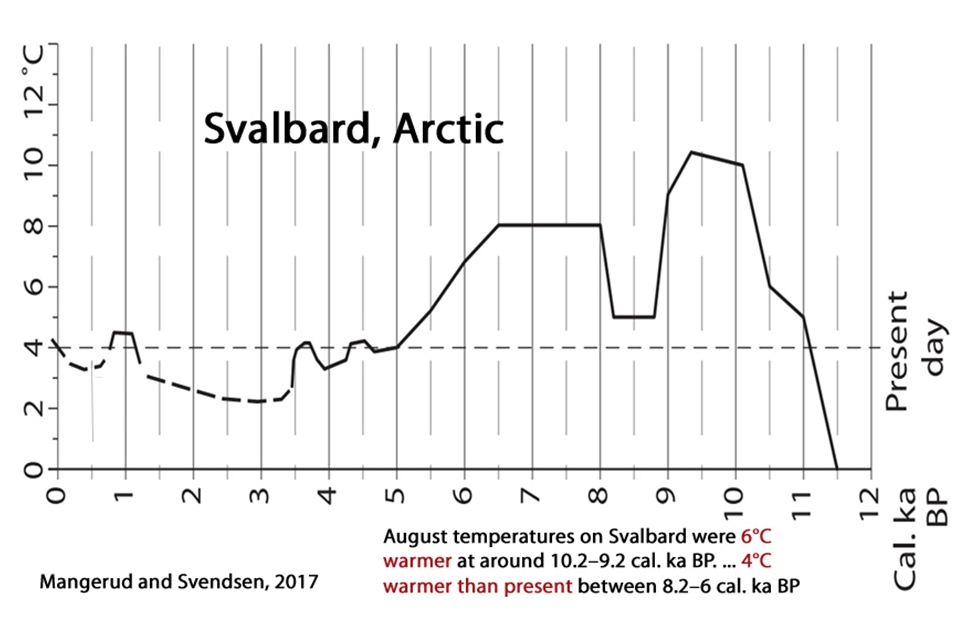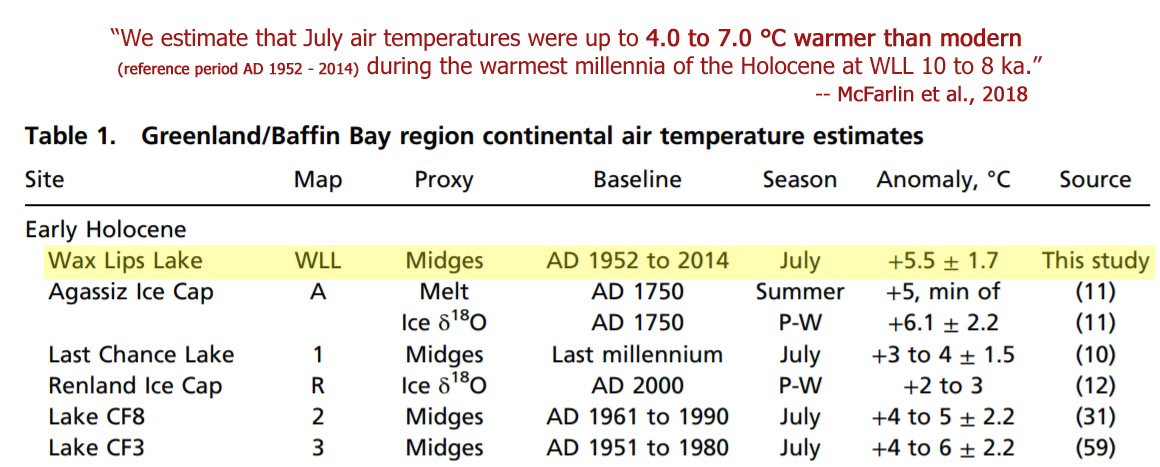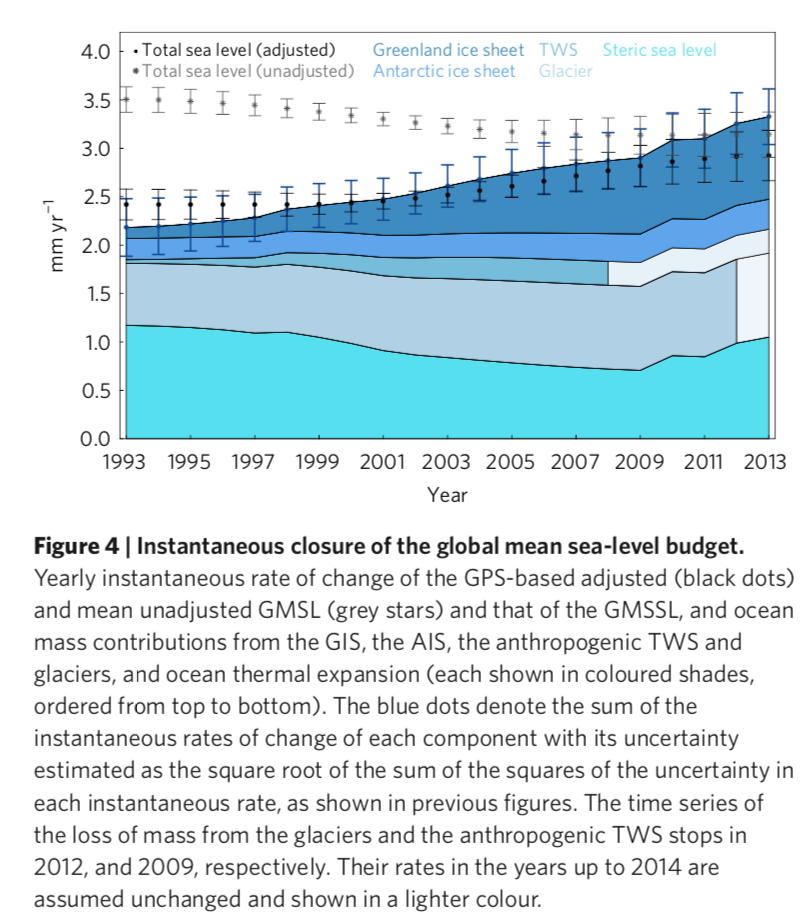[CO2] at 260ppm and everything survived about a 6C difference with today. At least we know that it wasn't SUVs

Mangerud and Svendsen, 2018
The Holocene Thermal Maximum around Svalbard, Arctic
North Atlantic; molluscs show early and exceptional warmth
“Shallow marine molluscs that are today extinct close to Svalbard, because of the cold climate, are found in deposits there dating to the early Holocene. The most warmth-demanding species found, Zirfaea crispata, currently has a northern limit 1000 km farther south, indicating that August temperatures on Svalbard were 6°C warmer at around 10.2–9.2 cal. ka BP, when this species lived there. … After 8.2 cal. ka, the climate around Svalbard warmed again, and although it did not reach the same peak in temperatures as prior to 9 ka, it was nevertheless some 4°C warmer than present between 8.2 and 6 cal. ka BP. … The occurrence of the blue mussel, Mytilus edulis, suggests that climate around Svalbard was 2°C warmer than at present as early as about 11 cal. ka BP. The climate was about 6°C warmer than at present between 10.0 and 9.2 cal. ka BP, as shown by the presence of Zirfaea crispata. One single specimen of Mytilus is dated to 900 years BP, suggesting a short-lived warm period during the Medieval Warm Period of northern Europe.”

Bartels et al., 2018
Wahlenbergfjord, eastern Svalbard: a glacier-surrounded fjord
reflecting regional hydrographic variability during the Holocene?
“During summer, AW [Atlantic Water] rises up to waterdepths as shallow as ~55 m. … Summer surface temperatures [1955-2012] range between up to 3°C at the northern mouth and <-1.5 °C at the southern mouth of the Hinlopen Strait, while winter surface temperatures vary between 0.5 and <~1.5°C (averaged, 1955–2012; Locarnini et al. 2013). … Increased summer insolation probably amplified the surface melting of the glaciers resulting in enhanced meltwater production and in a very high accumulation of finegrained sediments within the fjord […].”
“In addition, during the mild early Holocene conditions, summer sea-surface temperatures probably reaching 8–10°C [~5 – 9°C warmer than 1955-2012] (indicated by M. edulis findings as discussed in Hansen et al. 2011) may have contributed to reducing the number of glaciers that entered the fjord directly as tidewater glaciers and thus causing a diminished IRD input. … In lake sediments from northwestern Spitsbergen a temperature drop of ~6°C is recorded between c. 7.8 and c. 7 ka [-0.8°C per century], which has been connected to a stronger influence of Arctic Water and expanding sea ice (van der Bilt et al. 2018).”
McFarlin et al., 2018
Pronounced summer warming in northwest Greenland
during the Holocene and Last Interglacial
“(Greenland) Early Holocene peak warmth has been quantified at only a few sites, and terrestrial sedimentary records of prior interglacials are exceptionally rare due to glacial erosion during the last glacial period. Here, we discuss findings from a lacustrine archive that records both the Holocene and the Last Interglacial (LIG) from Greenland, allowing for direct comparison between two interglacials. Sedimentary chironomid assemblages indicate peak July temperatures [Greenland] 4.0 to 7.0 °C warmer than modern during the Early Holocene maximum [10,000 to 8,000 years ago] in summer insolation. Chaoborus and chironomids in LIG [the last interglacial] sediments indicate July temperatures at least 5.5 to 8.5 °C warmer than modern.”

 johnu, on 2018-June-14, 20:35, said:
johnu, on 2018-June-14, 20:35, said:
 Help
Help





